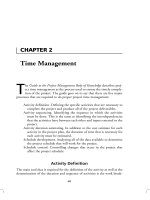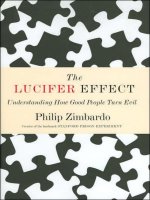Understanding business 10th chapter 2 understanding how economics affects business
Bạn đang xem bản rút gọn của tài liệu. Xem và tải ngay bản đầy đủ của tài liệu tại đây (3.59 MB, 71 trang )
Chapter 02
Understanding
Economics
and
How It Affects
Business
McGraw-Hill/Irwin
Copyright © 2013 by The McGraw-Hill Companies, Inc. All rights reserved.
ECONOMICS: WHAT IS IT?
What Is
Economics?
• Economics The study of how society employs
resources to produce goods and services for
distribution among various groups and individuals.
2-5
The MAJOR BRANCHES of
ECONOMICS
• Macroeconomics Concentrates on the
operation of a nation’s economy as a whole.
• Microeconomics Concentrates on the behavior
of people and organizations in markets for particular
products or services.
2-6
What Is
Economics?
RESOURCE DEVELOPMENT
LG1
Resource Development
The study of how to increase
resources and create
conditions that will make better
use of them.
2-7
Economic Theories
THOMAS MALTHUS and the “DISMAL SCIENCE”
• Malthus believed that if the rich had most of the
wealth and the poor had most of the population,
resources would run out.
• This belief led the writer Thomas Carlyle to call
economics “The Dismal Science.”
• NeoMalthusians believe there are too many
people in the world and believe the answer is
radical birth control.
2-10
POPULATION as a RESOURCE
• Contrary to Malthus, some economists believe a
large population can be a resource.
- An educated population is a highly valuable.
- Business owners provide jobs and economic
growth for their employees and communities as
well as for themselves.
2-11
Adam Smith &
the Creation of
Wealth
LG1
ADAM SMITH in 1776 the
FATHER of ECONOMICS
Smith believed that:
• Freedom was vital to any economy’s survival.
• Freedom to own land
or property and the
right to keep the
profits of a business
is essential.
• People will work hard
if they believe they
will be rewarded.
2-12
The INVISIBLE HAND THEORY
• Invisible Hand When selfdirected gain leads to
social and economic benefits for the whole
community.
• As people improve their own situation in life,
they help the economy prosper through the
production of goods, services and ideas.
2-13
Example of
INVISIBLE HAND THEORY
• A farmer earns money by
selling his crops.
• To earn more, the farmer hires
farmhands to produce more
crops.
• When the farmer produces
more, there is plenty of food
for the community.
• The farmer helped his
employees and his community
while helping himself.
2-14
Three Economic Systems
Socialism
(Highly Controlled)
(Little Control)
Communism
Capitalism
2-16
CAPITALISM
• Capitalism All or most of the land, factories and
*
stores are owned by individuals, not the
government, and operated for profit.
Countries with capitalist foundations:
-
United States
England
Australia
Canada
2-17
The Foundations
of Capitalism
LG2
CAPITALISM’S
FOUR BASIC RIGHTS
1. The right to own private
property.
2. The right to own a business
and keep all that business’s
profits.
3. The right to freedom of
competition.
4. The right to freedom of
choice.
2-18
Understanding
FreeMarket
Capitalism
STATE CAPITALISM
LG2
• State Capitalism When the state, rather than
private owners, run some businesses.
• Wellknown countries practicing state
capitalism:
- China
- Russia
• These countries have experienced some success
using capitalistic principles, but the future is still
uncertain.
2-19
Supply and Demand
2-20
Supply Curve
Supply The quantities of products businesses are
willing to sell at different prices.
High
Price(P)
S
Low
Quantity(S)
High
2-21
Demand Curve
• Demand The quantities of products consumers
are willing to buy at different prices.
High
Price(P)
D
Low
Quantity(D)
High
2-22
Equilibrium Point
• Market Price (Equilibrium Point) Determined
by supply and demand, this is the negotiated price.
Surplus
High
Market Equilibrium
Price
S
Low
2-23
Shortage
Quantity
D
High
FREE MARKETS
• Free Market Decisions about what and how
much to produce are made by the market.
• Consumers send signals about what they like
and how they like it.
• Price tells companies how much of a product
they should produce. If something is wanted but
hard to get, the price will rise until more products
are available.
2-24
MARKET PRICE Example
• A seller may want to sell
shirts for $50, but only a
few people may buy them
at that price.
• If the seller lowers the
price to $30, more people
buy the shirts.
• The seller establishes a
price of $30 based on what
consumers are willing to
pay.
2-25
FOUR DEGREES of FREE MARKET
COMPETITION
1.
2.
3.
4.
Monopoly
Oligopoly
Monopolistic Competition
Perfect Competition
2-26
Free-Market
Competition
Monopolistic
Oligopoly
Competition
One
Many
Perfect
Competition
Monopoly
Sellers
2-27
Monopoly: One Seller
• Diamonds
• Utilities
2-28









